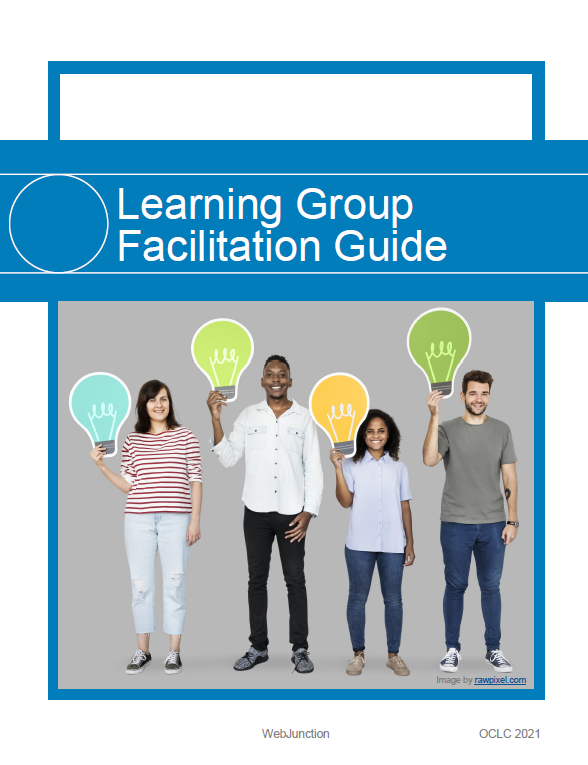Learning Group Facilitation Guide
Learning groups can enrich a self-paced course experience, creating opportunities for idea sharing, community building, and accountability as participants progress through course material together. This learning group facilitation guide provides a framework for organizing, structuring, and leading a group of learners through self-paced courses on any topic.
- Learning Group Facilitation Guide - DOC, with planning worksheet and checklists, December 2023
- Learning Group Facilitation Guide - PDF, with planning worksheet and checklists, December 2023
Why learn together?
“By convening a group of learners who are interested in a similar topic, you’ve got the basis for an open, collaborative learning environment that has the potential to be the support system many learners need. Peer learning can create a rich learning environment in which everyone simultaneously teaches and learns, acts and observes, speaks and listens” (P2PU Learning Circles Facilitator Handbook, www.p2pu.org).
Learning groups are lightly facilitated study groups for people to learn together. They provide a collaborative environment that has the potential to increase motivation as the group sets attainable goals together and connects their learning to practical application. Learners in a group share ideas and insights, answer each other’s questions, and learn from new perspectives and solutions. They form bonds as a community and reflect together on progress, which boosts confidence.
Introduction to learning groups
To learn more about the benefits of learning in a group, watch this short video.
What is a learning group facilitator?
A learning group facilitator’s primary role is to convene and coordinate the group and to guide discussions. They are not teachers and are not expected to be subject matter experts with “correct” answers on the topics. A facilitator helps to cultivate an environment in which learning and sharing among participants leads to desired outcomes. The facilitator can participate in a group as a co-learner or guide a group at the administrative level of a training coordinator or supervisor.
Learning Group Facilitation Guides for specific WebJunction courses
WebJunction created the first facilitation guide in conjunction with the Supercharged Storytimes project, and have used the model to customize guides for other topic-specific learning in the WebJunction Course Catalog.
- Supercharged Storytimes Facilitator Guide (pdf) and article, Learning Together the Supercharged Way
- Learning Groups for Creating Pathways for Civil Legal Justice Courses
- Learning Groups for Navigating Civil Legal Issues of Natural Disasters Courses
- For Introduction to Crisis Communications for Libraries, Archives, and Museums, see Group Activities Guide (doc)
- For Crisis Communications Planning for Libraries, Archives, and Museums, see Group Activities Guide (doc)
- For From Burnout to Balance, see Group Activities Guide (doc)
- For De-escalation Strategies for Libraries, Archives, and Museum Staff, see Group Activities Guide (doc)
- Digital Collections Stewardship Discussion Guide (pdf), facilitating learning group discussions for the Digital Collections Stewardship course series
Use and Adapt the Guide
Anyone may use and adapt this guide for free under the terms of Creative Commons Attribution-NonCommercial-ShareAlike 4.0 International (CC BY-NC-SA 4.0) licensing. Please credit WebJunction/OCLC and provide a link to the source; in addition, adaptations should be shared under the same license agreement.

